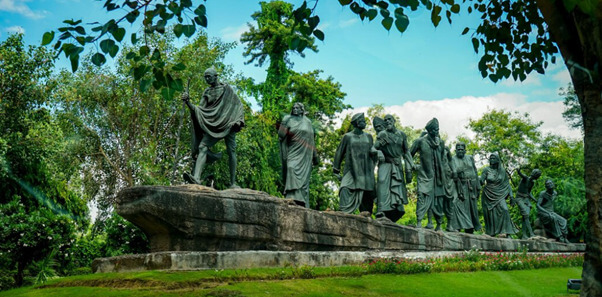Updated February 9, 2023
About Civil Disobedience Movement
The word “disobedience” has always been associated with a negative feeling, where a person decides not to follow the rules, throws tantrums, and makes things difficult for others involved. However, what happens when the word “civil” gets attached to it? Civil Disobedience is something noble, where opposition to some rules, laws or somebody in a position of authority represents in a dignified manner.
(Image Source: – Freepik)
The Civil Disobedience Movement started in India to gain independence from the British Empire. It played a significant role in achieving the much-desired freedom for which many great souls had laid down their lives. Let me give you a glimpse into this critical event of the Indian Nationalist movement.
Events related to Civil Disobedience Movement
- On 12th March 1930, Mahatma Gandhi started the Dandi March from Sabarmati Ashram in Gujarat to the coastal village of Dandi.
- On 6th April 1930, Gandhi launched the Civil Disobedience Movement at the Dandi coast by picking up a handful of salt and breaking the salt law.
- After the launch of this Movement in Dandi, people started defying the salt law, and there were massive protests across the country.
- On 4th May 1930, Gandhi went to jail after he announced that he would steer a raid on the Dharasana Salt Works in Gujarat.
- Gandhi’s arrest resulted in massive national protests, including in Bombay, Calcutta, Delhi, and Sholapur.
- Various leaders in various parts of the country intensified the Movement, like C Rajagopalachari in Tamil Nadu, K Kelappan in Malabar, P Krishna Pillai in Calicut, Khan Abdul Gaffar Khan in Peshawar, and Chandraprabha Saikiani in Assam.
- Ordinary people like merchants, students, tribals, peasants, and women were restricted in the house and participated in this great Civil Disobedience Movement.
- When the monsoon started, the Movement could no longer be limited to defying salt law. Other social issues started being covered, including refusal to pay revenue in ryotwari areas, no chowkidar tax campaign, violation of forest laws, and boycott of lower-level administrative authorities.
- The government used repressive methods to suppress the Movement.
- On 23rd August 1930, in an attempt to harass the freedom fighters.
- In another significant attempt to suppress the Civil Disobedience Movement, strict enforcement of the Press Act of 1910 took place, which forced many newspapers and magazines to stop their publication.
- Gradually, the attempts to suppress the Movement turned brutal with the destruction of public property and the infliction of injuries on innocent people.
- However, such tactics failed to douse the fire of freedom in the people’s hearts, which perplexed the government.
- Gandhi started the Salt Satyagraha to Dharasana in May 1930, when thousands of non-resisting protestors got punishment ruthlessly until they fell. This incident attracted international attention and raised questions regarding the credibility of the British Empire at home.
- The Movement reached a stage where most of the Congress leaders were put behind bars to put an end to it.
- In March 1931, a meeting occurred between Mahatma Gandhi and the Viceroy Lord Irwin, which led to the signing of the Gandhi-Irwin pact.
- The Civil Disobedience Movement effectively ended with this pact, which resulted in the release of those arrested during the Movement, permission for the Indians to make salt for domestic use, removal of salt tax, and fair treatment of those government employees who had resigned.
Impact
The Civil Disobedience Movement was a continuation of the Non-cooperation Movement and largely united the country in its struggle for independence. It brought out the moral strength of the commoner, which eventually led to India’s independence in 1947.
Recommended Articles
We hope that this EDUCBA information on “Civil Disobedience Movement” was beneficial to you. You can view EDUCBA’s recommended articles for more information,



